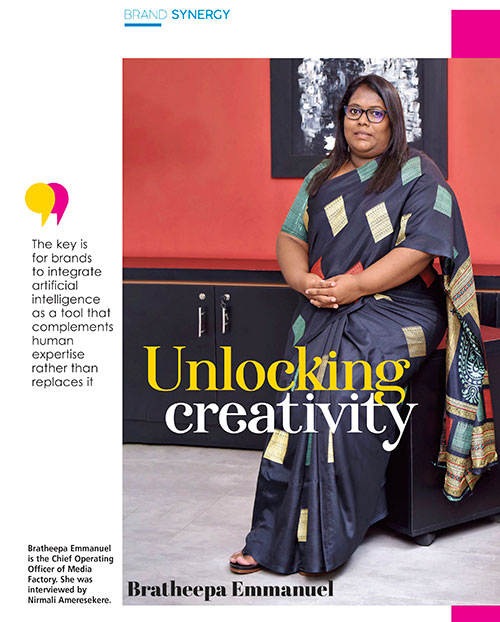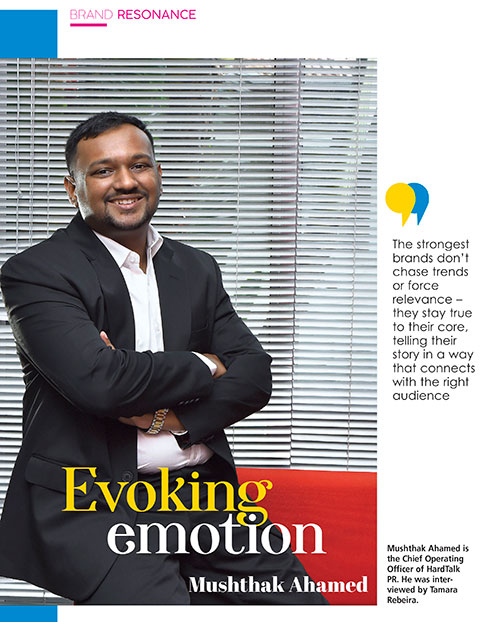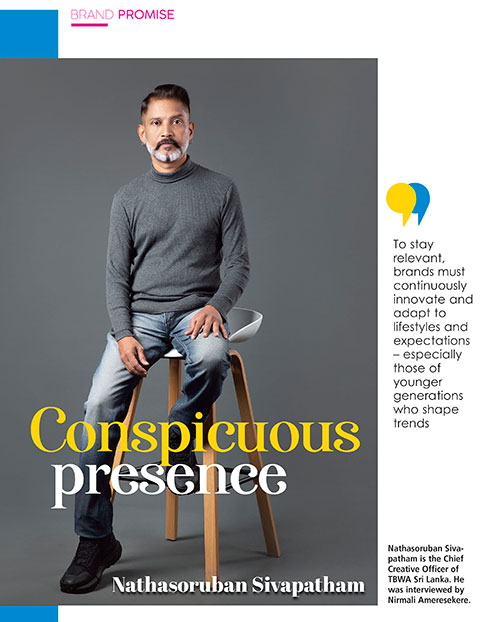BRAND CONNECTION
Strategic storytelling
Nevindee Amarasinghe
Q: How would you define a strong brand – and what key elements contribute to brand building?
A: A brand is not valued by its net worth – its value is in the consumers’ perspective, how the organisation’s values are portrayed and how the brand personality connects to the customer.
The emotional connection is key: when it comes to the audience, world-class brands are deeply connected to their audience on a human level.
And when we look at the key elements of building a brand, it should have a clear purpose and an objective of what it’s trying to achieve while demonstrating consistency across the board in everything it does.
Q: How important is brand purpose in today’s world? And how can businesses ensure authenticity in their branding?
A: Brand purpose is very important – consumers are constantly seeking and experimenting with different brands to identify one that speaks to them. A strong brand purpose creates trust, loyalty and emotional engagement. However, authenticity is crucial for a business to align itself with its actions.
A brand should integrate its purpose into everything it does operationally to ensure it does not deviate from its mission. Consistency and transparency will generate genuine interest in the business and credibility will be built over time.
Q: In an era dominated by social media and digital platforms, how can brands differentiate themselves and maintain consumer loyalty?
A: Every brand tells a story to build human connection and emotional resonance. On social media especially, content should reflect core values – not merely follow trends.
A consistent brand voice across digital platforms is key. Even a small audience can create value through clear and authentic communication.
Q: With AI and automation becoming more prevalent, how can brands maintain the human touch while embracing digital advancements?
A: It is clear that AI and automation are taking over interactions – especially in services where technology is often prioritised over people. Tools such as ChatGPT and Canva offer shortcuts to completing tasks; but in the process, the human touch – which is irreplaceable – has been lost to some extent.
Brands should streamline and utilise AI in ways that enhance customer experiences while still ensuring human interaction. Additionally, we must remember that AI at present does not possess built-in empathy.
Storytelling cannot be done solely through AI; it needs the human touch. As with anything in life, it’s all about striking a balance.
Q: What are the most effective marketing channels for building brand presence today?
A: This is a tough one – it ‘depends’ is the key word here. It depends on the industry or sector, brand and target audience.
For some brands, digital platforms don’t work and they merely seek an online presence. But for others such as a soft drink, a supermarket or a restaurant chain, being highly active with regular content uploads, search engine optimisation, influencer collaborations and more is essential.
For some brands, a multichannel approach is highly effective, allowing them to combine online and offline strategies to achieve the best results.
Q: How important is influencer marketing in today’s branding strategies – and how can businesses ensure effective partnerships?
A: Influencer marketing is one of the most interesting tools that a brand can use, as it has become an essential component of brand communications.
Most of today’s customers consume video and audio content extensively. When they see influencers, they tend to form a connection with the content and trust recommendations more than traditional advertising.
It is somewhat unfortunate that most consumers today trust influencer marketing more than traditional marketing. However, if the right influencer who aligns with the brand isn’t chosen, it could end up being a disaster.
Therefore, selecting an influencer with authenticity and credibility is crucial for achieving consistent success and building a brand.






